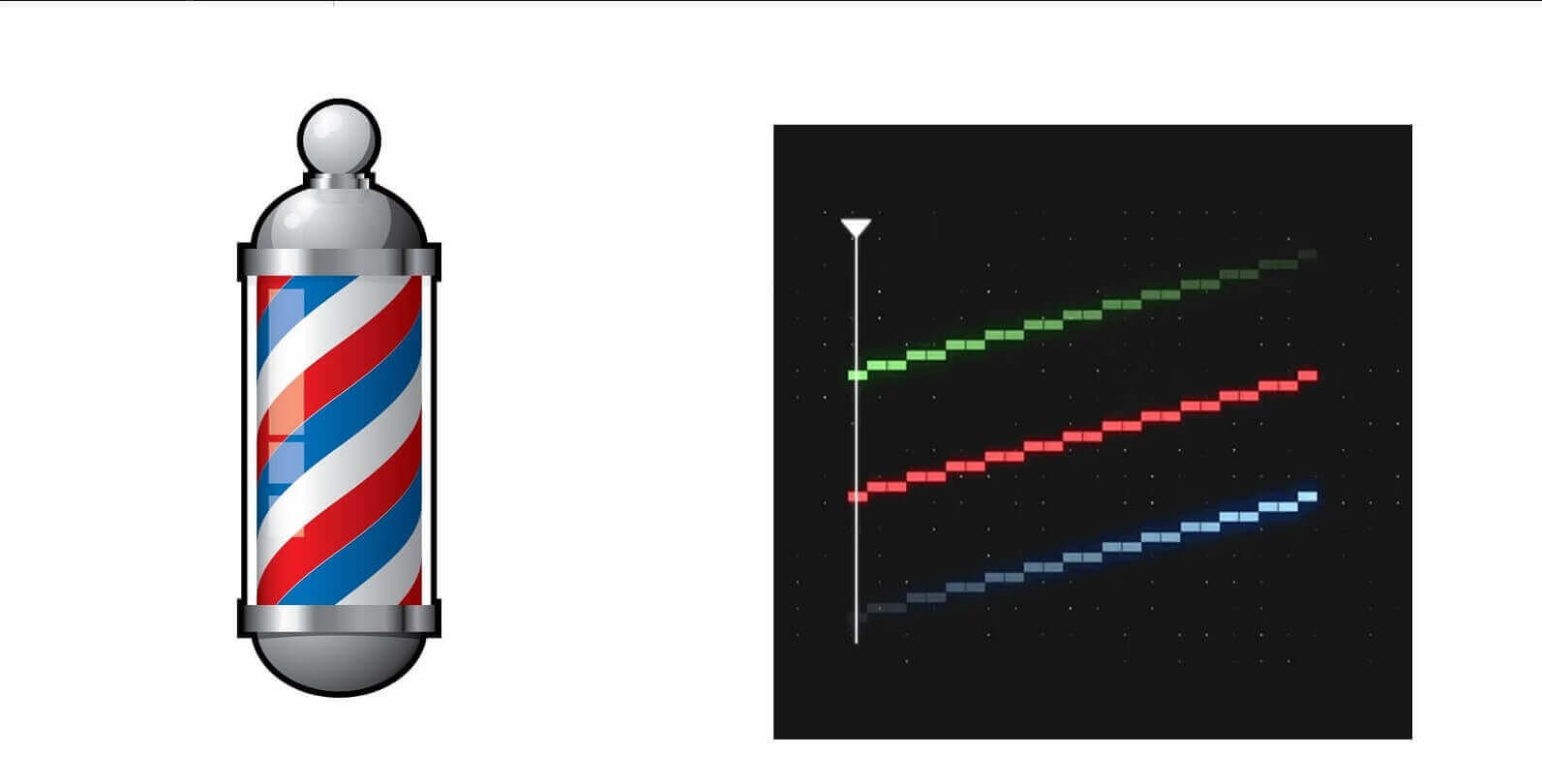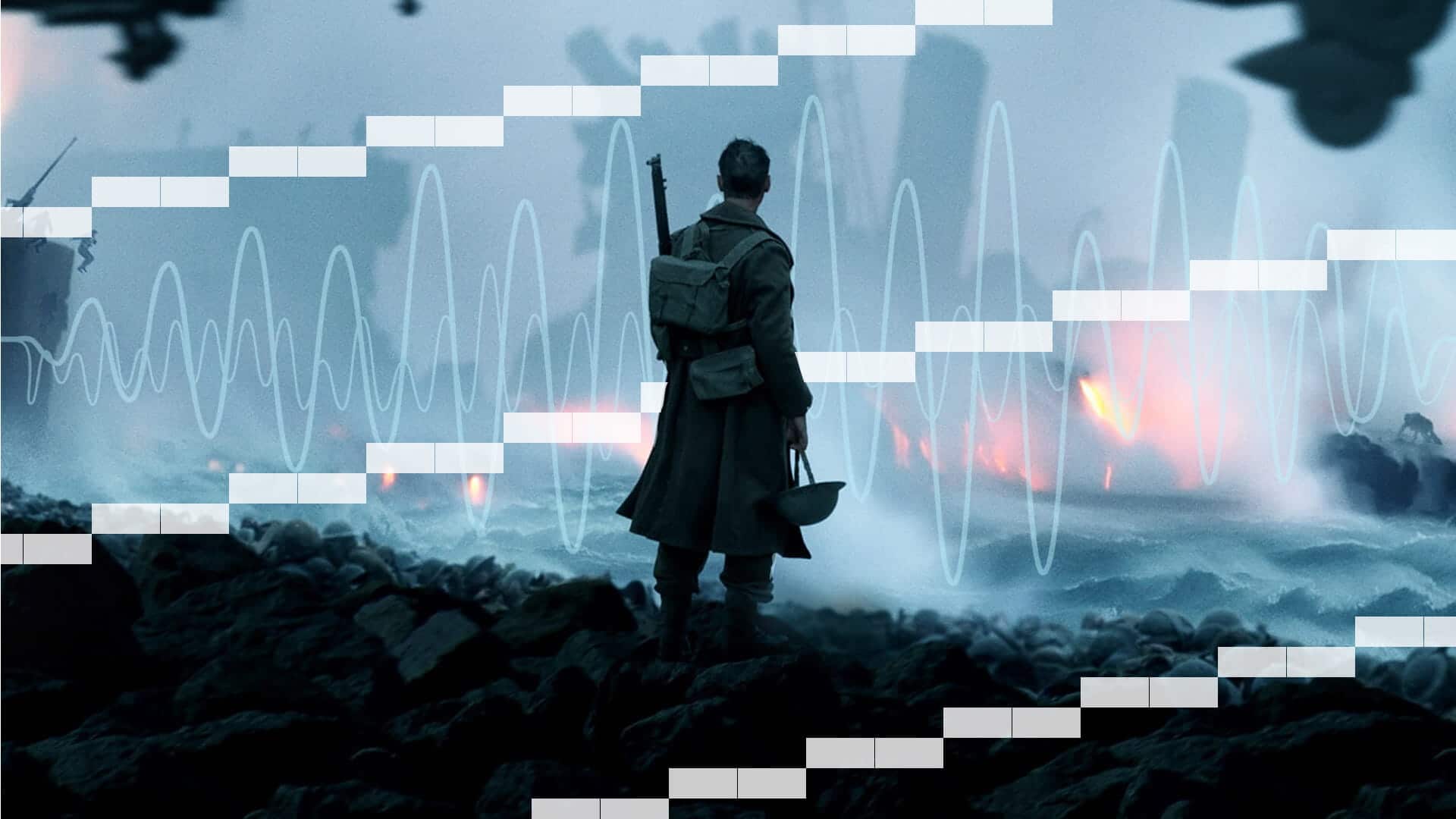Never-ending. Eternal. Infinite. People speak in hyperbole quite often but, in real life, everything does come to an end. Everything, that is, except The Shepard Tone, which may be the one thing that truly doesn’t stop. This audio illusion is more than just a novelty, however, and filmmakers like Christopher Nolan have embraced it in their work. From sound effects to the musical score, nothing ramps up tension quite like the Shepard Tone. We’ll explain how this illusion works and with some examples of this fascinating trick of the ear.
Shepard Scale
First, let’s define the Shepard Tone
Now, if you’re a film buff, chances are you’ve heard the Shepard Tone a time or two, but not as much as you might think, and you probably didn’t notice it when it happened. That's the beauty of it — the illusion works on an almost subconscious level.
You might’ve felt something, found yourself more engaged, but too often music and sound are overshadowed by visuals. But not today! We're going to see and hear examples on how to create an unforgettable moments using the Shepard Scale but let's start with a quick definition.
Shepard Tone DEFINITION
What is the Shepard Tone?
The Shepard Tone is an audio illusion that creates the feeling of consistent, never-ending rising/falling. The illusion is achieved by playing overlapping notes that are one octave apart. For this reason, it forms a Shepard Scale, each scale fading in and fading out so that the beginning or end of any given scale is indistinguishable. In this way, the sensation of rising or descending notes never ends.
Traits of the Shepard Tone Illusion:
- Creates the illusion of continuous rising or falling notes or frequencies
- Achieved by simultaneously playing scales separated by one octave
- Scales are played at different volumes
Interestingly enough, the Shepard Tone (or Shepard Scale) is actually named after a cognitive scientist named Roger Shepard. Shepard created a visual illusion called the Shepard Table as well.
Aside from Shepard’s Tone, the phenomenon is also sometimes called the “Musical Barber Pole” or “The Sonic Barber Pole” for the visual representation of a similarly endless illusion.

Shepard Tone Illision
In recent years, two names have started to become synonymous with the illusion: director Christopher Nolan and his long-time composer, Hans Zimmer.
The frequent collaborators adopted the concept and have creatively implemented it in everything from musical score, to sound design, even story structure. Let's look at how it's used in each of these arenas.
THE ILLUSION IN MUSIC
The Shepard Tone in music
Aside from Nolan, the concept had primarily been used in popular music by groups like The Police, Pink Floyd, or in electronic music to build up before a kick. Here's Franz Ferdinand with a track using the Shepard Scale, appropriately titled "Always Ascending."
Franz Ferdinand • Always Ascending Shepard Tone
One of the more known examples of a Shepard Tone sample came way back in 1996 with the release of Super Mario 64. Not exactly subtle, and not quite how Nolan uses it, but you get the idea.
Super Mario 64 Shepard Tone
Despite the same illusion, it uses noticeable different sounds. The effect here is almost eerie, instead of rapidly chasing something, you’re stuck in a loop, in a futile effort.
These are both examples of ascending Shepard Tones. The rising version is more common than the falling Shepard’s Tone, but both certainly have their uses.
Here's an example of a falling Shepard Tone, which sounds quite surreal.
Shepard Tone Descending
Feels like something David Lynch might use. When you hear the Shepard Tone descending, it's easy to imagine how it might be used to create symbolism in a visual medium like film — a character falling through endless space.
Music is an obvious medium with which to yield Shepard's Tone but the applications don't end there. Let's switch gears and talk about how this audio illusion can also be used in sound design — most notably Nolan's Dark Knight trilogy.
SHEPARD Scale SAMPLE: SOUNDS EFFECTS
The Shepard Tone in sound design
Aside from dubstep, the idea of consistently rising action certainly lends itself well to filmmaking, especially action films.
In one of the best Christopher Nolan movies, The Dark Knight (2008), Batman’s motorcycle, aka the Batpod, is a prime example of how this illusion can be applied to more than music. Listen to the Batpod sound effect and you'll hear a very familiar and endlessly rising tone:
Batpod Sound Effect • Rising Shepard Tone
Production designer Nathan Crowley makes it a point to call the Batpod “not a motorcycle, but a machine.” A machine that seemingly keeps accelerating, raising the urgency and importance of every moment we hear that Batpod sound effect.
Shepard Scale Sample: Film Score
The Shepard Tone in a film score
But again, perhaps no one has used the illusion quite the way Christopher Nolan has. We mentioned the Batpod sound effect, but the first time Nolan implemented the Shepard tone was actually in the original musical score for The Prestige (2006).
One of the best scores of all time, composed by David Julyan, is peppered with an ascending Shepard Tone. You can hear the rising Shepard tone throughout the following track, but most notably in the last 10 seconds or so.
The Prestige Score • Rising Shepard Tone
The Prestige main theme is about magic tricks, about mystery and suspense. It is only fitting then that the music mirrors those effects. In those last 10 seconds, the scales rise, the suspenseful music builds until — it stops, the rug is pulled out from under us, like a magic trick.
Hans Zimmer Shepard Tone
The Shepard Tone in Dunkirk
Still, Nolan and his partner-in-crime, Zimmer, saved the real magic for one of the best WWII movies, Dunkirk (2017), a film that embraced the Shepard Tone as no other has. Here's an excellent breakdown of how this was achieved:
Shepard Tone Illusion in Dunkirk
The most immediate and recognizable application of this audio illusion is on the soundtrack but Nolan didn't stop there. He actually modeled Dunkirk's story structure on the same endlessly rising trajectory.
Nolan: “I wrote the script according to that principle. I interwove the three timelines in such a way that there’s a continual feeling of intensity. Increasing intensity…. We built the music as we built the picture cut. So there's a fusion of music and sound and picture that we’ve never been able to achieve before.”
Watch this clip and you’ll know what he’s talking about, just make sure you pay attention to the Dunkirk score in the background.
Dunkirk Score • Oil Blast Scene
All three storylines (Mole, Air, and Sea) come together in this scene after rising throughout the film. And you catch the rising Shepard Tone a couple of times:
- Once for basically the first 2 minutes. This is more frantic, chaotic.
- Second when underwater. Here the suspense is more isolated, it’s individualized and personally desperate. And the ticking only adds to the effect.
I watched a lot of Dunkirk score videos trying to pick out the best Hans Zimmer Shepard Tone, but the entire Dunkirk music score is amazing. Here's another example:
Hans Zimmer Shepard Tone
It would’ve felt wrong if I didn’t give Zimmer the chance to play us out. Remember that the Shepard Tone can be used in many facets of filmmaking — from the script to the soundtrack. You can bring these concepts into your own work with Nolan and Zimmer as your guides.
Related Posts
UP NEXT
How to use suspenseful music
Now that you’re familiar with rising and falling Shepard Tones, what other ways can you build suspense with score? Before you decide what music to use in your next project, make sure you cover all your bases and become a master of suspense.
Up Next: Music for suspense →
Showcase your vision with elegant shot lists and storyboards.
Create robust and customizable shot lists. Upload images to make storyboards and slideshows.
